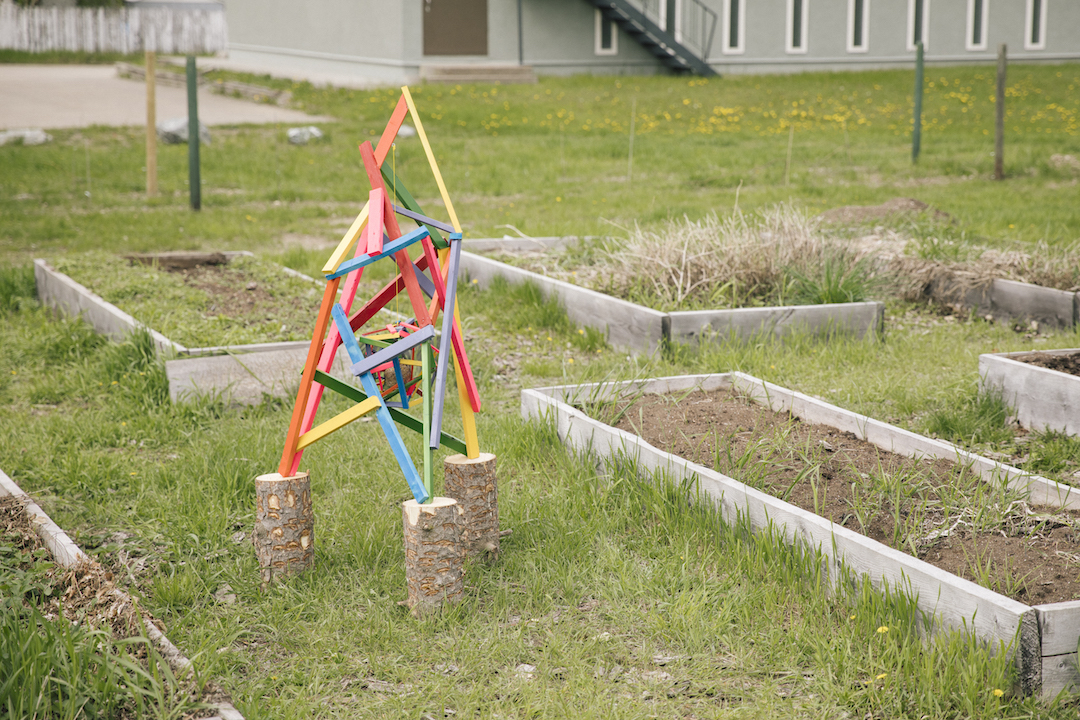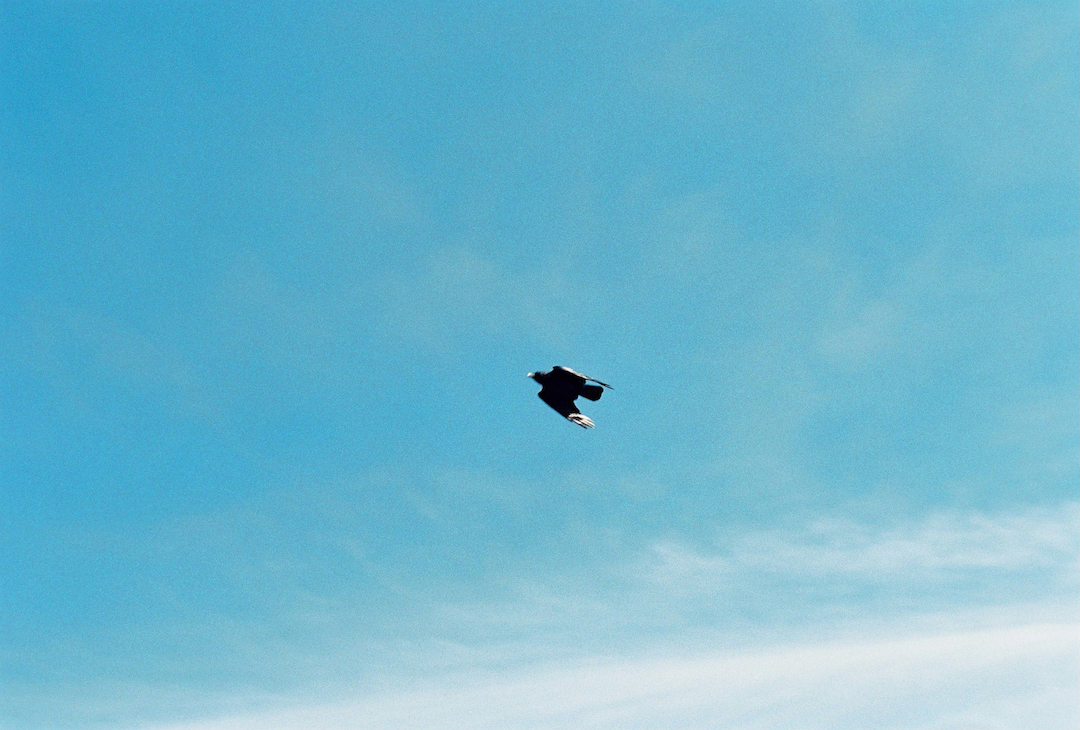Perry Rath. Field Gaze. 2017. Off-site with crow in Prince George. Photo by Denis Gutiérrez-Ogrinc.
Field Gaze is a colourful sculptural construction made by Smithers-based artist, Perry Rath. Built out of wood scraps salvaged around the Bulkley Valley, the triangulated formation rests upon three firewood rounds and is weighted by a hanging pendent in the shape of of a human head. Nestled inside the wooden head is a small mesh sac of suet and seed. Subtly anthropomorphized, the matrix of Field Gaze suggests the structure's utility is caught somewhere between that of a bird-feeder and that of a scarecrow, a tension that makes reference to our own complicated relationship with nature.
Since the opening of the exhibition, Field Gaze has been periodically removed from the gallery space and taken to outdoor urban and rural sites around the city of Prince George. Left in fields, parks, urban gardens, parking lots, and vacant lots, the sculpture is never "at rest" in any particular environs for too long a time, but is instead engaged in a circling of the city. Each environment is reactive and responsive to the artwork, and the artwork is in turn marked, dinged, eaten and chipped away at over time.
Perry Rath. Field Gaze. 2017. Off-site at Growing Community Garden. Photo by Caitlin Chaisson.
The first outdoor landing site for the sculpture was at Growing Community Garden in the downtown core. The urban garden is an important location that looks to transform community through a holistic lens. As organizers note, the garden brings together "diverse members of the Prince George community around shared values of local food production, sustainability and social justice" [1]. For the Growing Community Garden, these issues are not isolated, and solutions to social, economic, and food inequalities can be seen simultaneously through an ecological perspective.
This kind of connectedness is something that resonates amidst Rath's artwork, which he envisions will eventually be left to deteriorate back into the landscape at the end of the exhibition. The colours of the artwork over time will fade from the sun, the suet and seed will be consumed, and the wood will break back down into the same kind of scraps that he initially salvaged.
From certain vantages, the triangular shape looks as though it is leaning, tilting, perhaps poised to tumble over itself in a work that ultimately circles back again.









